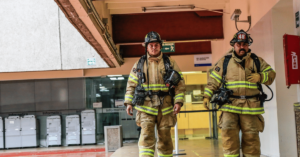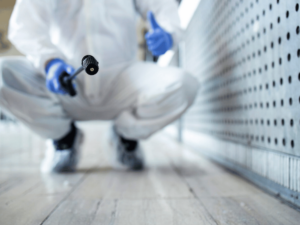The hierarchy of control has been a keystone in the risk assessment process protecting workers from occupational hazards since the 1950’s. That’s when it was introduced by the National Safety Council (NSC).
This article takes you on a guided tour of the hierarchy and its use in occupational health and safety. You’ll explore examples and explanations to help you see how the hierarchy applies to you and your organisation.
What is the Hierarchy of Control?
The hierarchy of control is a structured approach to implementing the most effective risk control measures possible.
Risk management professionals recognise it as a framework designed to eliminate or minimise the risk of workplace injury or illness.
Often depicted as an “upside-down pyramid”, the hierarchy’s most effective hazard control measure is at the top and its least reliable control at the bottom.
The five levels of control to eliminate or reduce risks, in order of effectiveness, are:
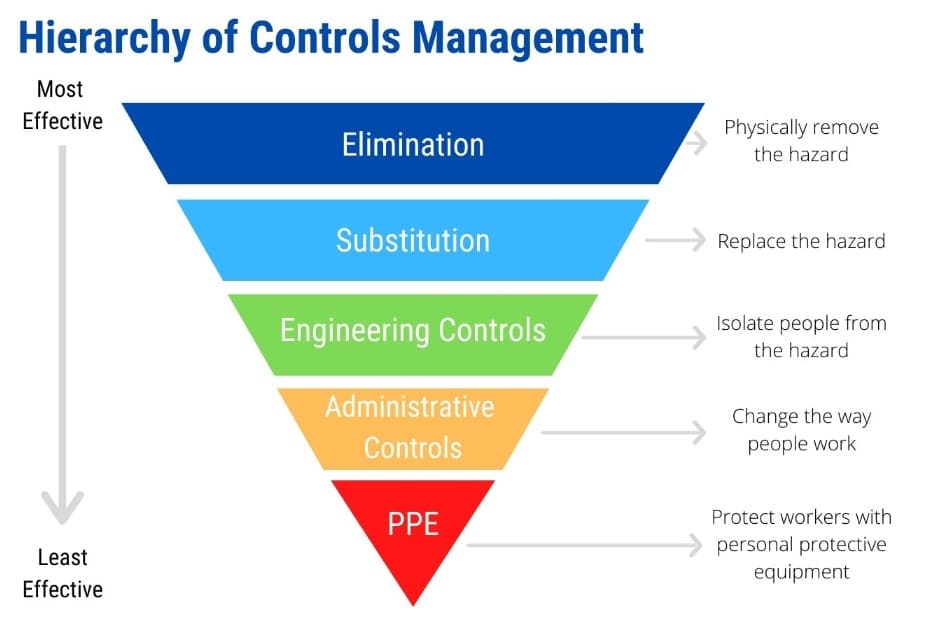
Prevention through Design (PtD) – The First Line of Defence
Prevention through Design (PtD) is a concept that aligns with the Hierarchy of Control in the context of health and safety management. PtD is a first line of defence against hazards.
This proactive approach is based on the principle that the design of products, processes, and systems can significantly impact health and safety in the workplace.
By addressing hazards at the design stage, organisations can eliminate or minimise hazards before they become a problem, reducing the risk of injury or illness in the workplace.
PtD is particularly important for new or redesigned products, processes, or systems, as it provides an opportunity to incorporate health and safety considerations into the design process.
Look around your workplace; I’m sure you will see many instances where PtD hasn’t or couldn’t eliminate a hazard. That’s where the hierarchy of controls comes in…
The 5 Levels of the Hierarchy of Control with Examples
The five levels are implemented as part of the risk assessment process, using a step-by-step approach to hazard control.
This section covers each of the five control methods, starting with the most effective control measure:
Step 1: Eliminate Hazards
This step involves the elimination of a hazard so that the risk of injury or ill health is removed.
Naturally, taking steps to eliminate hazards is the most effective way to control risk, as it eliminates the risk of exposure entirely.
This can be likened to “pulling the roots of a weed”. For our more desirable garden plants, removing the roots of a weed eliminates exposure to protect them from the harmful effects of the weed.
Similarly, eliminating hazards or avoiding the hazards completely is a surefire way to ensure they will not cause injury or illness in the workplace.
An example of Hazard Elimination
In a manufacturing plant, a hazard might be a sharp edge on a piece of equipment that poses a risk of cuts or punctures.
They might buy pre-machined material to eliminate this hazard, eliminating the risk of injury.
Step 2: Substitution
Hazard elimination is often unachievable; that’s when you move to consider substitution controls.
Substitution involves replacing a hazard with a less hazardous one. This reduces the risk of hazard exposure, although it may not eliminate risk entirely.
Just as replacing a poisonous plant with a safer one can create a safer garden, substituting a hazardous substance or process with a safer alternative can create a safer workplace.
An example of Hazard Substitution
On a construction site, a hazard might be using lead-based paint.
To address this threat and reduce risk, lead-based paint can be substituted with a safer alternative, such as water-based paint that does not contain lead.
This could mean the difference between the paint being toxic and an irritant.
Step 3: Engineering controls
Engineering control, as the name suggests, involves preventing hazard exposure using engineered solutions.
Implementing Engineered controls can be considered “building a fence around a hazard”. Just as a fence can physically separate a person from danger, engineering controls can physically separate workers from hazards in the workplace.
There are several types of engineering controls, which include:
-
Isolation involves physically separating the worker from the hazardous process or substance, thereby reducing the risk of exposure to the hazardous substance or process.
This is achieved by enclosing the process or substance in a separate room, using barriers or partitions, or using remote controls to operate the process from a safe distance.
-
Total enclosure isolates an entire process or substance within a container or structure. It contains hazardous substances or processes and prevents them from escaping into the workplace.
Industries like pharmaceutical manufacturing or chemical production frequently utilise total enclosure due to the high risk of exposure to dangerous materials.
-
Separation or segregation physically separates workers from various hazards, including noise, heat, radiation, and hazardous chemicals, by creating a physical barrier between them. This can be achieved in several ways, such as using partitions, barriers, or distance.
Separation or segregation aims to eliminate or minimise the risk of injury or illness in the workplace by keeping workers away from potential hazards.
-
Safety devices are a type of control method used to protect people from hazards by preventing or reducing the likelihood of accidents or injuries.
Safety devices are physical mechanisms or systems that are designed to detect and respond to potentially dangerous situations.
Examples of safety devices include interlock switches, emergency stops, guards, and protective barriers.
Step 4: Administrative controls
To implement administrative control you need to change how you do the work to minimise exposure to hazards.
Think of implementing administrative controls as “establishing rules and procedures for safe play.”
Just as we establish rules and procedures for safe play in sports, administrative controls help ensure safe work practices.
Here are some common administrative controls:
1) Safe systems of work
A safe system of work typically involves developing safety procedures and guidelines to minimise the risk of accidents or injuries.
These safety procedures may include activities such as handling hazardous materials or working at heights.
Regardless of the activity, it is essential to conduct regular inspections and monitoring to ensure procedures are followed correctly. In doing this, you will also identify and assess any new hazards that require your attention.
2) Reduce exposure
By reducing exposure we aim to decrease workers’ exposure to a hazard, thereby reducing the risk of harm. This is normally achieved by limiting the duration and intensity of exposure experienced by any one person.
You can reduce exposure through various administrative measures, such as implementing job rotation, reducing work hours, or limiting access to certain areas or equipment.
3) Information, instruction, training, and supervision
This control measure aims to ensure that workers have access to the relevant information, instruction, and training required to perform their work safely.
Information and instruction
Information and instruction is an administrative control that provides workers with relevant information and guidance to perform their work safely.
To ensure worker safety through this control measure, you can ensure workers are aware of workplace hazards and receive instructions on how to do their work safely.
Providing information and instruction like this can take many forms, such as safety data sheets, warning labels, hazard communication training, or written instructions. These should be clear, concise, and in a language that workers understand.
Training
Training as a control measure requires developing people at all levels of an organisation so that they understand how to work safely.
Health and safety training could cover a wide range of areas specific to the work done in a business. This might include courses on things like manual handling, handling hazardous materials, and identifying and controlling workplace hazards.
While technical training like this is vital, training should also include a more general understanding of health and safety in the workplace.
There is a full range of health & safety training, courses and qualifications for employees, managers and safety professionals.
Some popular examples include:
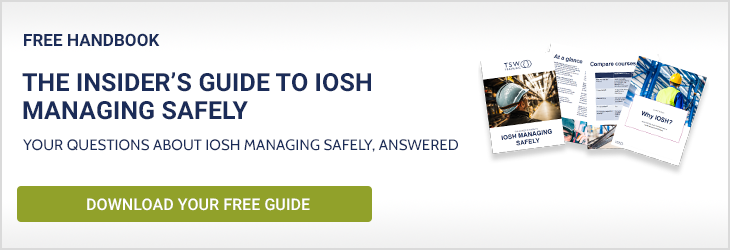
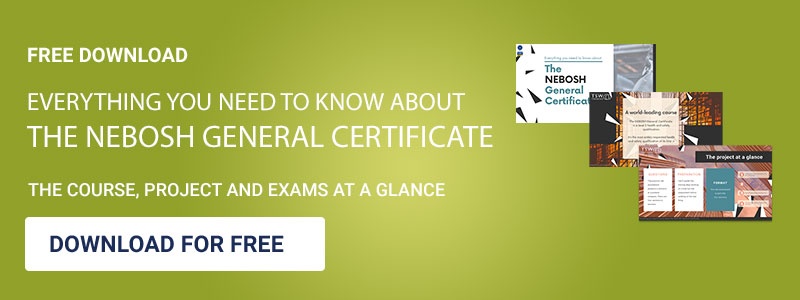
Supervision
Supervision, provided by a supervisor or manager, aims to ensure workers follow company procedures and work safely.
To do this, the ‘supervisor’s’ job is to take proactive and remedial action to ensure workers and other stakeholders behave in a safe manner.
Your organisation must conduct regular safety audits and inspections to evaluate the effectiveness of this control measure. By doing so, they will identify areas for improvement in safety-related behaviours, processes, and other relevant areas.
Step 5: Personal Protective Equipment (PPE)
This involves using personal protective equipment to protect people and workers from hazards. This provides a last line of defence to protect workers from hazards, but it is not as effective as the other levels.
For example, providing hard hats, safety glasses, and earplugs to workers to protect them from the hazards they face in the workplace.
There are several important considerations when using PPE. For example, there are situations that can render PPE ineffective and using it on the job can increase physiological effort.
It is important to consider the overall impact when deciding on the appropriate PPE for a job.
What are the Benefits of Using the Hierarchy of Controls?
-
Improved Safety: Workplace safety is a primary benefit. The implementation of control measures in a methodical manner will eliminate or minimise hazards and reduce the risk of injury or illness.
This can result in fewer accidents and incidents, reducing the number of workplace injuries and illnesses and improving the overall safety of the workplace.
-
Increased Productivity: Implementing the Hierarchy of Control can also lead to increased productivity in the workplace.
By reducing the risk of accidents and incidents, employees can work more efficiently and effectively, reducing downtime and increasing productivity.
-
Compliance with Regulations: By implementing control measures that eliminate or minimise hazards, organisations can meet the legal requirements for workplace health and safety.
-
Improved Reputation: By using the Hierarchy of Controls and demonstrating a commitment to workplace health and safety, organisations can build trust and credibility with employees, customers, and other stakeholders.
Challenges Implementing Hierarchy of Control Measures
An important phrase in health and safety is “as far as is reasonably practicable”, which essentially means weighing up the risk of injury/illness with the time and money needed to control it.
Implementing control measures to manage health and safety hazards in the workplace can be a complex, challenging and costly process.
Some of the key challenges include:
-
Cost: Implementing control measures can be costly, particularly when they involve expensive equipment, technology, or other resources.
Organisations may be reluctant to invest in these measures if they do not see an immediate return on investment.
-
Time: Implementing control measures can also be time-consuming, particularly when they involve significant changes to processes, systems, or equipment.
Organisations may be reluctant to undertake these changes if they are already under time pressure to meet other deadlines.
-
Resistance to change: Employees and stakeholders may resist changes to processes, systems, or equipment, particularly if they are familiar with existing methods and are comfortable with the status quo.
-
Lack of expertise: Organisations may lack the expertise or resources to identify and implement effective control measures.
This can be particularly challenging for smaller businesses with limited resources or for those in industries with unique hazards and challenges.
-
Maintenance and monitoring: When you implement your control measures, you are taking the first critical step; you must then monitor and maintain them over time to ensure they remain effective in controlling hazards. This requires an ongoing investment of resources and attention.
-
Keeping up with regulations: Health and safety regulations and best practices are constantly evolving, so organisations must stay current.
Conclusion
The Hierarchy of Control is a critical tool for effective health and safety management in the UK. It is important for organisations to understand the hierarchy and implement it effectively to ensure a safe and healthy workplace for all employees.
That requires a proactive approach to hazard identification and control and a commitment to continuous improvement in health and safety management practices. By following this framework, organisations can identify, evaluate, and control hazards, reducing the risk of injury or illness in the workplace.
The benefits of using the hierarchy include improved safety, increased productivity, compliance with regulations, and improved reputation.
I hope this article illustrates that implementing control measures is a complex and challenging process. Organisations must prepare to overcome these challenges and invest time, resources, and expertise to ensure a safe and healthy workplace for employees and stakeholders.


